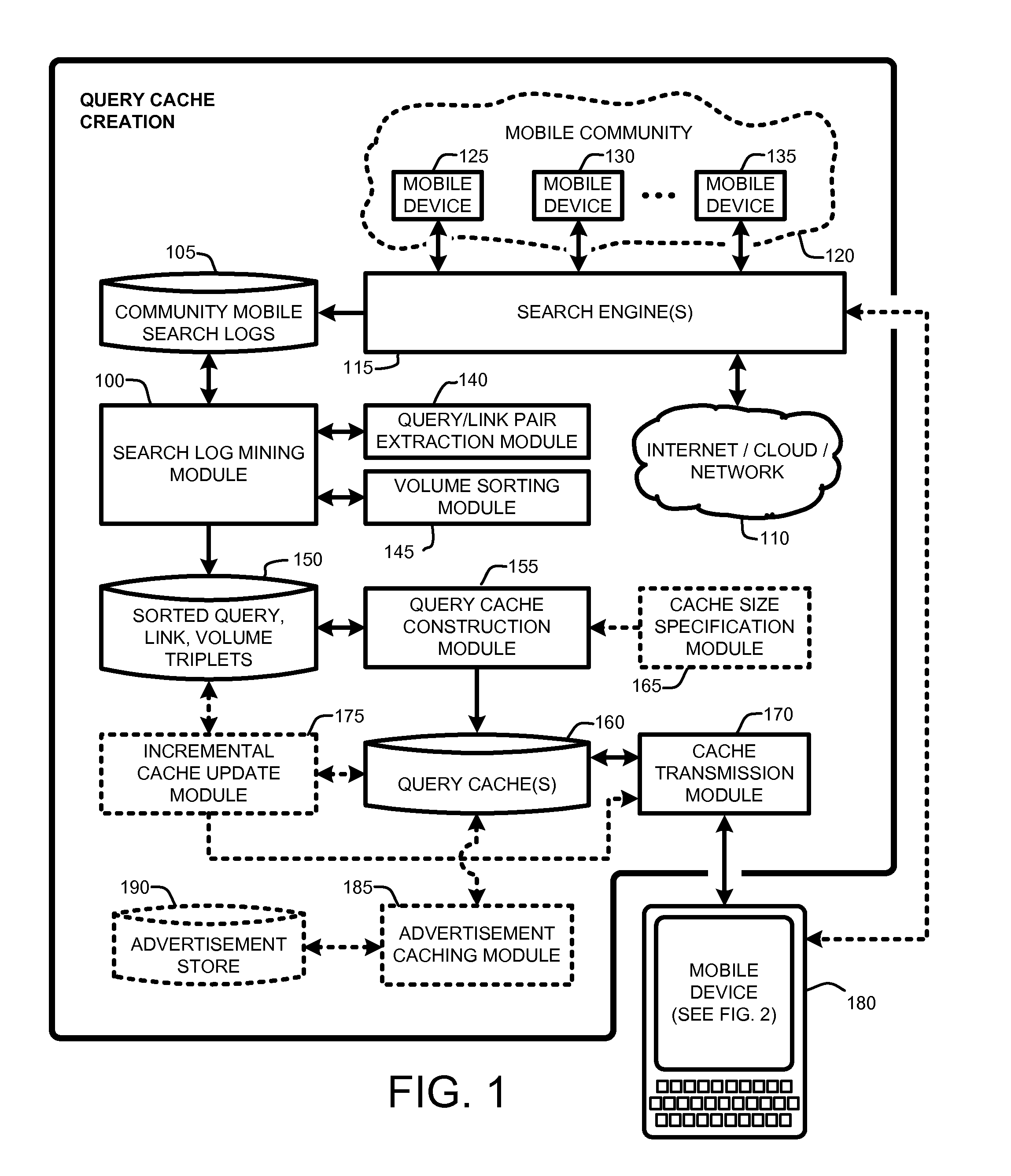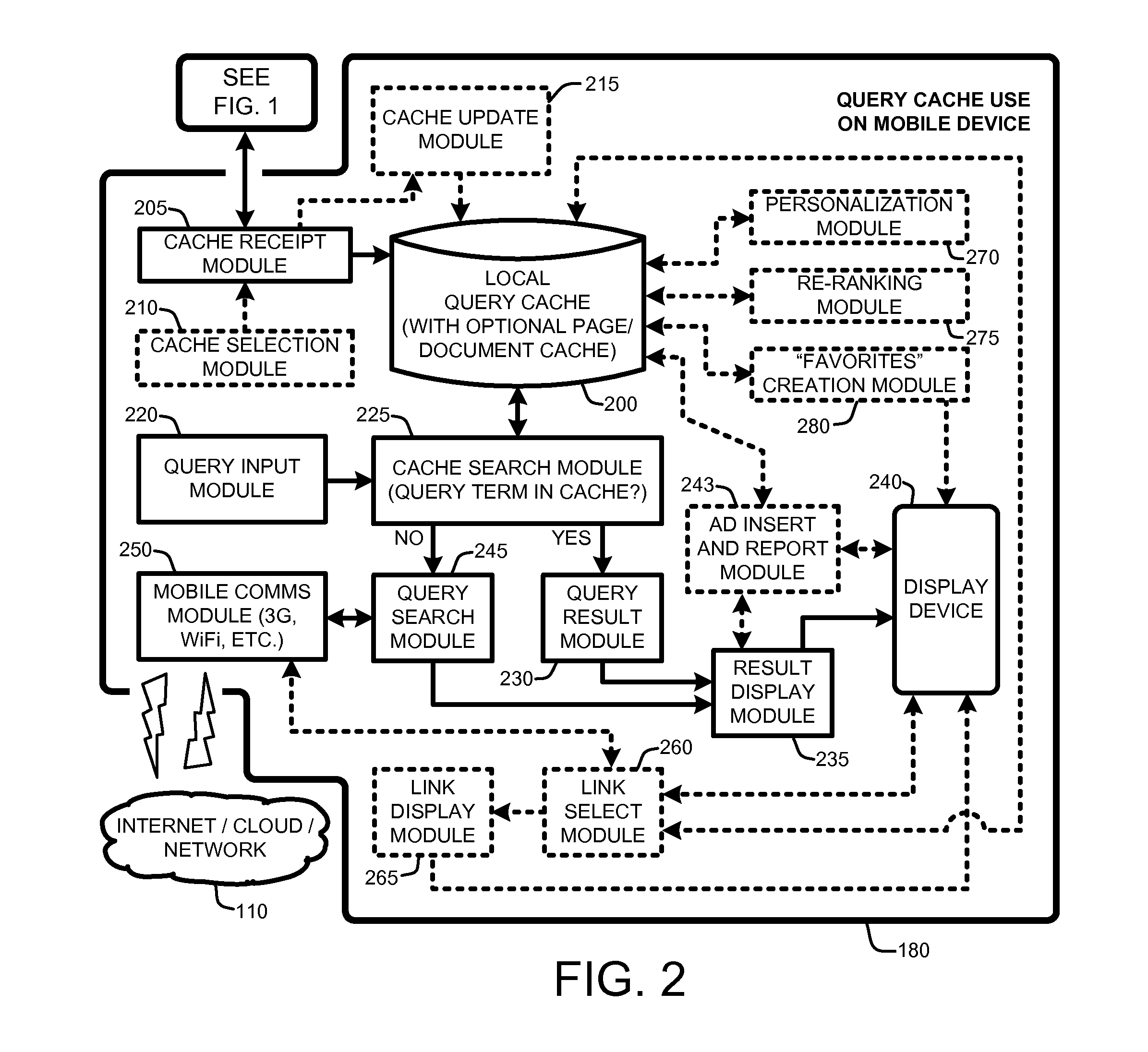Dynamic community-based cache for mobile search
a mobile search and community-based technology, applied in the field of community-based mobile search cache, can solve the problems of large difficulty in searching and quickly displaying the right piece of information on mobile devices, and the process of mobile device search and quickly displaying the right piece of information is a significant challenge, and the architecture has at least two major problems
- Summary
- Abstract
- Description
- Claims
- Application Information
AI Technical Summary
Benefits of technology
Problems solved by technology
Method used
Image
Examples
Embodiment Construction
[0028]In the following description of the embodiments of the claimed subject matter, reference is made to the accompanying drawings, which form a part hereof, and in which is shown by way of illustration specific embodiments in which the claimed subject matter may be practiced. It should be understood that other embodiments may be utilized and structural changes may be made without departing from the scope of the presently claimed subject matter.
[0029]1.0 Introduction:
[0030]In general, a “Community-Based Mobile Search Cache,” as described herein, provides various techniques for maximizing the number of query results served from a local “query cache”, thereby significantly limiting the need for mobile communications devices to use 3G, WiFi, or other wireless radio links to connect to the Internet, cloud, or other network when entering search queries. In other words, the Community-Based Mobile Search Cache uses a cache-based architecture to locally serve search queries by using the qu...
PUM
 Login to View More
Login to View More Abstract
Description
Claims
Application Information
 Login to View More
Login to View More - R&D
- Intellectual Property
- Life Sciences
- Materials
- Tech Scout
- Unparalleled Data Quality
- Higher Quality Content
- 60% Fewer Hallucinations
Browse by: Latest US Patents, China's latest patents, Technical Efficacy Thesaurus, Application Domain, Technology Topic, Popular Technical Reports.
© 2025 PatSnap. All rights reserved.Legal|Privacy policy|Modern Slavery Act Transparency Statement|Sitemap|About US| Contact US: help@patsnap.com



